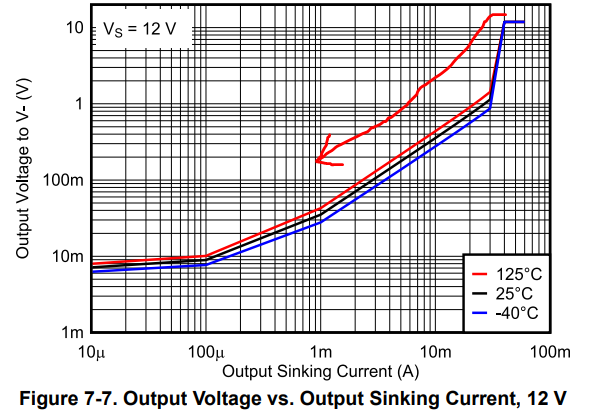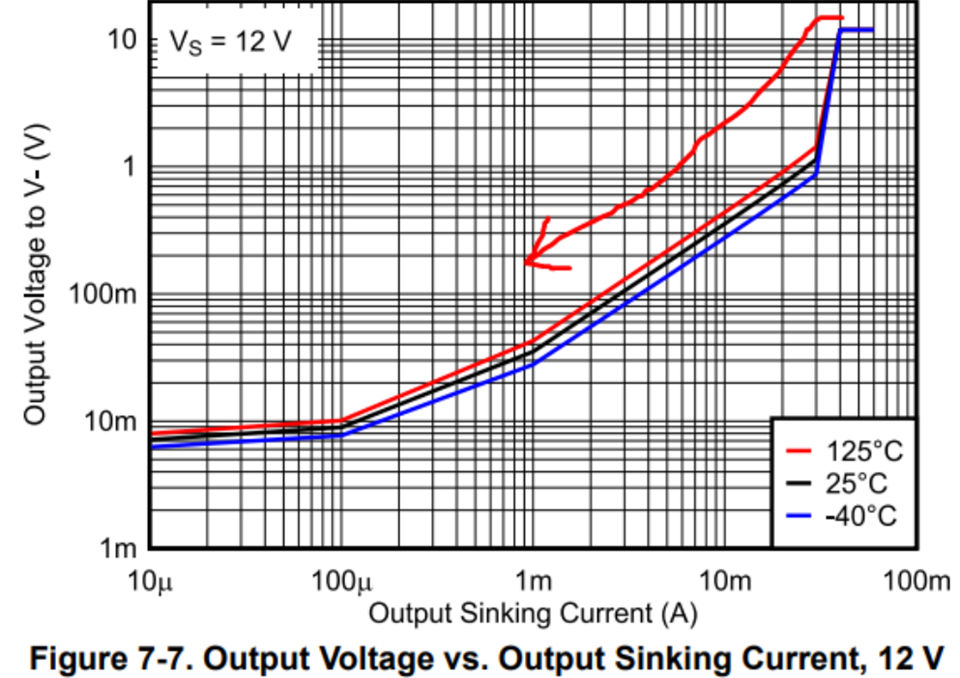Hi team,
this curve mean the sinking current under different output voltage , right?
so does this mean the sinking current will gradually decrease as the output voltage drop to 0?

This thread has been locked.
If you have a related question, please click the "Ask a related question" button in the top right corner. The newly created question will be automatically linked to this question.
Hi team,
this curve mean the sinking current under different output voltage , right?
so does this mean the sinking current will gradually decrease as the output voltage drop to 0?

This is not about switching, but about the DC behaviour.
In practice, the output load requires a certain current, and that results in a certain voltage. When the output drives low, but must sink current to do this, then the voltage drop between the output and GND is larger with larger currents. (A MOSFET behaves pretty much like a plain resistor, but saturates at large currents.)
In other words, when you connect a 100 Ω pull-up resistor to the output, the output voltage will be higher than with a 10 kΩ resistor.
Hi Ladisch,
I know it's DC behavior,
but it also tell us the dynamic behavior,
if we match the DC curve frame by frame.
for example, if only a output cap is connected.
and the voltage start to be sinked by comparator,
the sink current will gradually become smaller as the output dropping, right?
and eventually drop to around 100uA
Yes; if you use the output to discharge a capacitor, the voltage will fall like in an R-C circuit.
HI Ladisch,
speaking of RC,
can I assume the slope of the curve is that "R" resistor?
